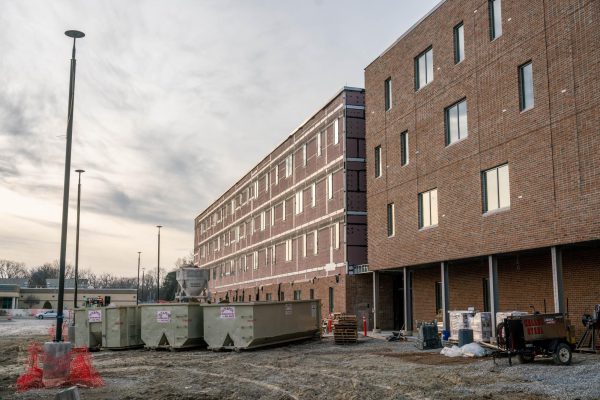Oberlin Raised $80 Million in Climate Bonds to Fund Sustainable Infrastructure Project
Oberlin College recently raised $80 million in Certified Climate Bonds for its Sustainable Infrastructure Project.
The College raised $80 million dollars for the Sustainable Infrastructure Project through climate bonds this July. Oberlin is the second institution of higher education in the U.S. to use climate bonds to fund sustainability projects on campus, after Stanford University. The College announced the acquisition of the climate bonds in an Aug. 6 email, just as the first phase of construction on the geothermal project is wrapping up.
Climate bonds are loans used for projects that have a verified positive impact on the environment. The climate bonds offered by the College were certified by the Climate Bonds Initiative as aligning with the goals of the Paris Agreement. Kestrel Verifiers, an approved verifier of climate bonds, reviewed the project to ensure it met the criteria for qualification. Climate bonds are the lowest cost method the College has used to finance a long-term project.
Oberlin attracted several high-profile companies interested in investing in the bonds, including PIMCO, MacKay Shields, and Goldman Sachs. With a growing interest from investors in opportunities for socially responsible and sustainable investments, climate bonds can be an attractive asset to these investment banks’ portfolios.
“We were confident our project was a strong candidate for the third-party Climate Bond certification,” wrote Vice President for Finance and Administration Rebecca Vazquez-Skillings in an email to the Review. “We believed — correctly, as it turns out — that the certification would produce better financial terms for the College than traditional bonds. And this has been a great opportunity for Oberlin to live out its values, showing national and global leadership in environmental sustainability.”
The funding comes just as Oberlin prepares to wrap up the first phase of the project, which includes work on South Campus buildings and Wilder Bowl. Oberlin plans to finish installing the necessary pipes, electrical systems, and internet capabilities in South Campus buildings by the end of September.
“Thanks to good work by our crews this summer, we are on schedule to complete the first phase of work at the end of September, which is just where we had planned to be in the overall project timeline,” wrote Chief Facilities Officer Kevin Brown in an email to the Review. “We are working to ensure minimal disruptions on South Campus this fall.”
Over the summer, students expressed frustration with the amount of obstructions that the construction project created on South Campus — especially in and around walkways surrounding the Mary Church Terrell Library and Wilder Bowl — and the removal of nearly 100 trees around campus. However, Brown emphasizes that aspects of the project taking place on Wilder Bowl are wrapping up and disruptions should be minimized during the next academic year.
“Much of what will be visible this fall is restoration of the grounds and landscaping where we’ve completed our underground pipe work,” Brown wrote. “In Wilder Bowl, for instance, we expect to have grass planted before the beginning of the fall semester, but we will need to rope off those areas to give the grass a chance to grow successfully. Other, larger plantings such as trees and shrubs will begin later this fall and continue into next year, as we take advantage of the optimum seasons for different species.”
As the College pushes forward with the project, Oberlin views the success of issuing the climate bonds as evidence that the College is moving in the right direction in terms of its goals surrounding carbon neutrality and sustainability.
“Increasingly, investors who share our goals for the environment are interested in demonstrating that through the market,” Vazquez-Skillings wrote. “The College’s continued leadership in environmental sustainability and our focus on financial stewardship attracted those investors. The external validation gave investors increased confidence and helped build enthusiasm for this offering.







